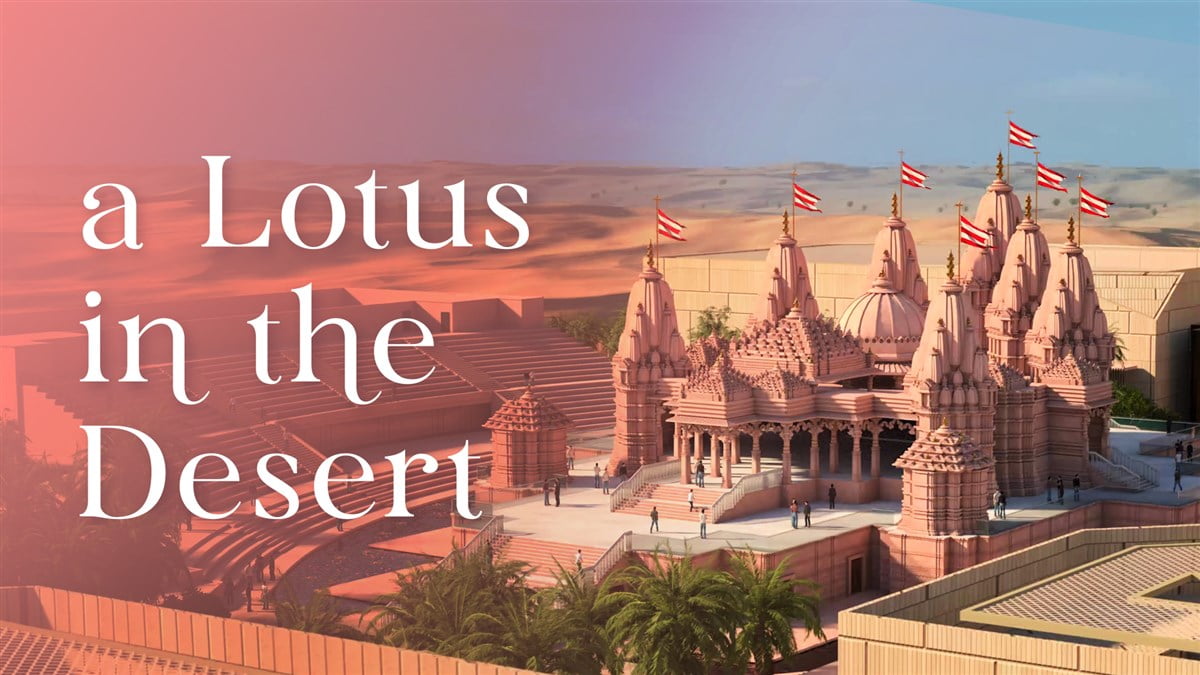Prime Minister Narendra Modi’s upcoming visit to the UAE holds a momentous occasion as he inaugurates the BAPS Swaminarayan temple in Abu Dhabi. This temple, the first of its kind in the UAE, represents not just a place of worship but a symbol of cultural harmony and bilateral ties between the two nations.

Introduction
Here’s a detailed look at the BAPS temple, its features, architecture, and significance:
Nutrients (in tabular format)
| Feature | Details |
|---|---|
| External Facade | Pink sandstone from Rajasthan |
| Interior | Italian marbles |
| Total Area | 27 acres |
| Construction Cost | More than Rs 700 crore |
| Height | 108 ft |
| Length | 262 ft |
| Width | 180 ft |
| Special Features | Wall of Harmony, Nano tiles, Pillar of pillars, Dome of Harmony and Dome of Peace, Deity features, Holy river |
During his upcoming visit, Prime Minister Narendra Modi will inaugurate the BAPS Swaminarayan temple in Abu Dhabi. This temple, standing tall at 108 feet, not only marks a significant milestone for the Hindu community in the UAE but also strengthens the cultural ties between India and the UAE.
What is BAPS?
The Bochasanwasi Akshar Purushottam Swaminarayan Sanstha (BAPS) is a renowned denomination of the Swaminarayan Sampradaya, a Vaishnav sect of Hinduism. With a global network of over 1,550 temples, including iconic structures like the Akshardham temples in New Delhi and Gandhinagar, BAPS promotes spiritual values and cultural harmony.
Features of the Temple
Situated on 27 acres of land, the BAPS temple in Abu Dhabi boasts traditional stone architecture with seven shikhars. The front panel showcases universal values and stories of harmony, while the temple’s dimensions stand at 108 feet in height, 262 feet in length, and 180 feet in width. Notably, it utilizes pink sandstone from Rajasthan for its exterior and Italian marbles for the interior, symbolizing a blend of Indian craftsmanship and global aesthetics.
Architectural Marvels
Recognized for its architectural brilliance, the temple has won accolades such as the Best Mechanical Project of the Year 2019 and the Best Interior Design Concept of the Year 2020. Featuring 96 bells paying homage to Pramukh Swami Maharaj’s life, the temple employs innovative nano tiles for visitor comfort, even in hot weather.
Special Features
The BAPS temple incorporates unique elements like the ‘Pillar of Pillars,’ symbolizing unity amidst diversity, and a ‘holy river’ surrounded by waters from the Ganga and Yamuna. A Varanasi-like ghat adds to its spiritual ambiance, while diverse civilizations’ tales adorn its walls, promoting cultural inclusivity.
Significance of the Temple
Beyond religious significance, the temple exemplifies unity and collaboration. It stands as a testament to multiculturalism, with contributions from individuals of various faiths and backgrounds, embodying the essence of coexistence and mutual respect.
Cultural Fusion
The BAPS temple exemplifies cultural fusion, where a Muslim king’s donation of land for a Hindu temple underscores tolerance and harmony. With diverse architectural styles and deities from different regions of India, the temple serves as a melting pot of cultures and traditions.
PM Modi’s Visit
Prime Minister Modi’s visit to the UAE underscores the growing ties between the two nations. His participation in the temple inauguration not only acknowledges the significance of the Indian diaspora but also highlights India’s commitment to fostering global partnerships.
Community Inclusivity
Open to everyone, the BAPS temple promotes inclusivity and diversity. It serves as a spiritual sanctuary for individuals from all walks of life, fostering a sense of belonging and unity among communities.
Conclusion
The BAPS temple in Abu Dhabi stands as a timeless testament to the power of faith, unity, and cultural exchange. As Prime Minister Narendra Modi embarks on this historic journey to inaugurate this iconic landmark, it symbolizes not just the resilience of the human spirit but also the boundless potential of cooperation and understanding among nations.
FAQs
Who can visit the temple?
The BAPS temple is open to everyone, irrespective of religion or nationality.
Who initiated the construction of the BAPS Swaminarayan temple in Abu Dhabi?
The visionary behind the temple’s construction was Pramukh Swami Maharaj, who envisioned a place of worship that transcended cultural and geographical boundaries.
What are some notable architectural features of the temple?
The temple boasts seven shikhars, two central domes representing harmony and peace, and a ‘Wall of Harmony’ adorned with inscriptions in 30 languages.
What is the significance of the temple’s inauguration for the Hindu community in UAE?
The temple provides a spiritual sanctuary for the Hindu diaspora in UAE and serves as a symbol of their cultural heritage and identity.
How does the temple contribute to bilateral ties between India and the UAE?
The temple inauguration signifies a deepening of cultural and diplomatic relations between the two nations, fostering mutual respect and understanding.
What message does the temple convey through its construction team’s diversity?
The diverse team involved in the temple’s construction exemplifies the spirit of collaboration and unity, transcending religious and cultural differences.
What is the significance of Prime Minister Modi’s visit to the UAE?
Prime Minister Modi’s visit signifies the strong bilateral ties between India and the UAE, highlighting the importance of cultural exchange and cooperation between the two nations.
What makes the BAPS temple unique?
Apart from its architectural splendor, the temple’s emphasis on cultural inclusivity, with depictions from various civilizations, sets it apart as a symbol of unity and diversity.
What materials were used in the temple’s construction?
The temple features pink sandstone from Rajasthan for its exterior and Italian marbles for its interior, along with innovative nano tiles and 20,000 tonnes of stones and marble.